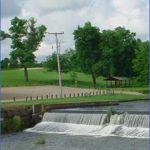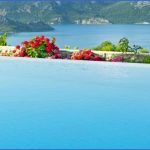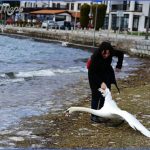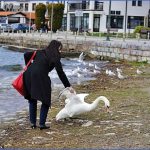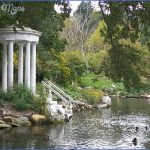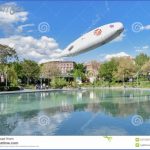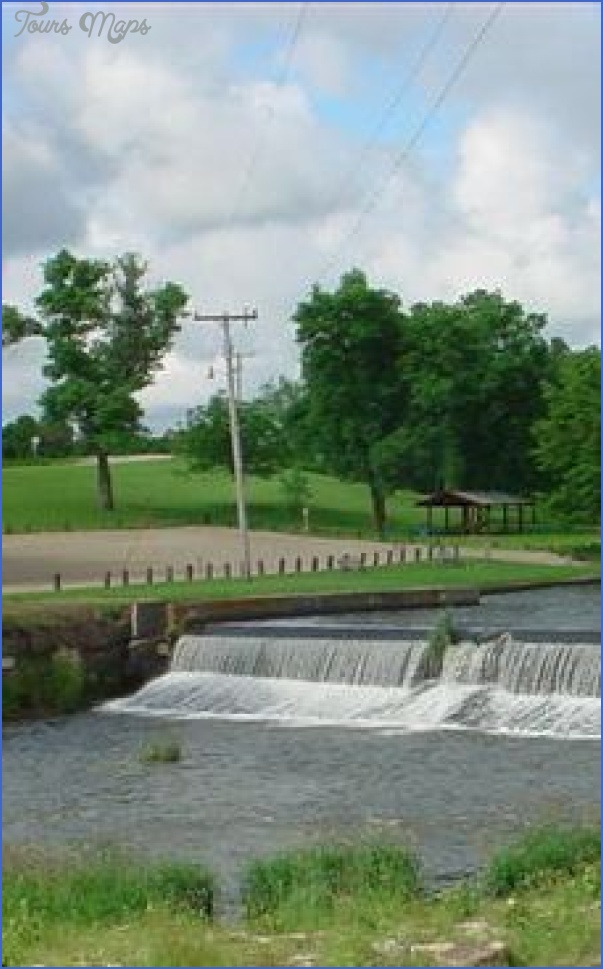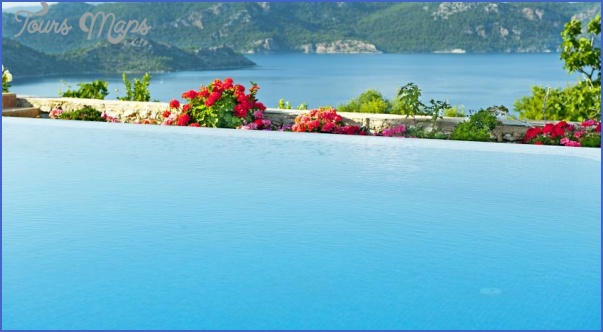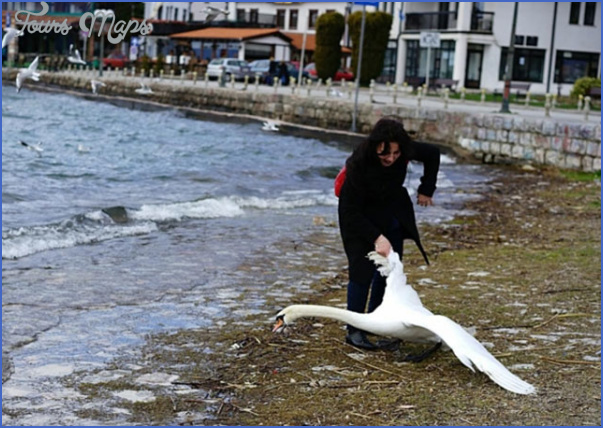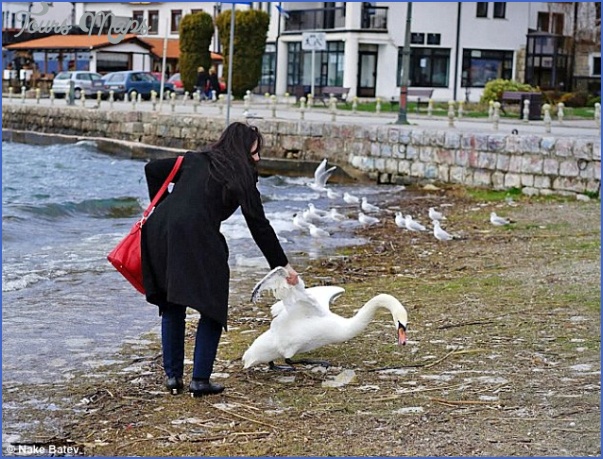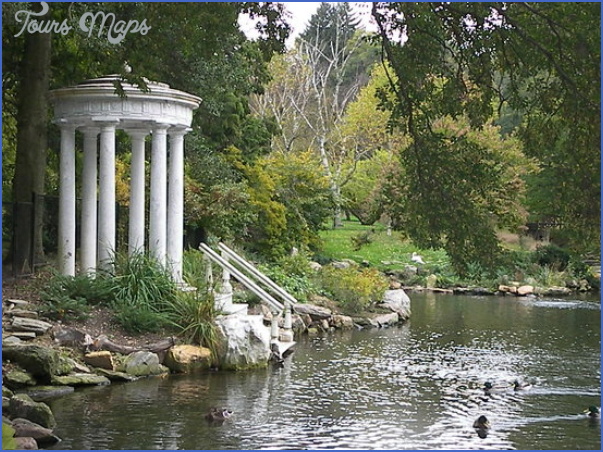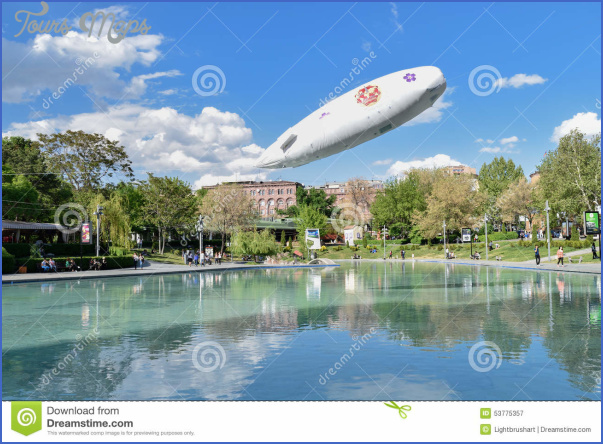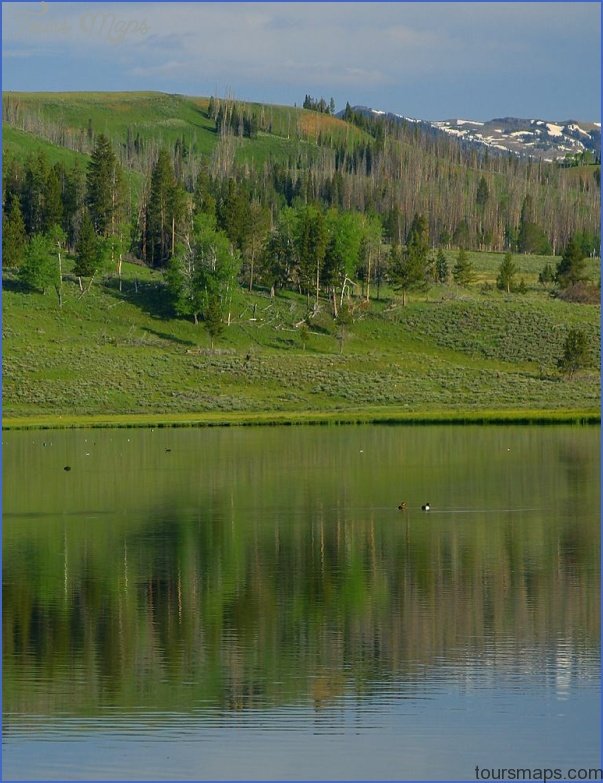Clearwater Crossing to Bigfork ESTIMATED LENGTH: 89 miles
Highlights: Seeley Lake, Blackfoot-Clearwater Wildlife Management Area, Salmon Lake,
Clearwater Canoe Trail, Seeley Lake Game Preserve, Holland Lake Falls, Old Squeezer Loop Road, Swan River National Wildlife Refuge, Swan Lake
Getting there: From the west, leave I-90 at Bonner (Exit 109) just a few miles east of Missoula and follow the Blackfoot River upstream to the junction of MT 83 at Clearwater Crossing.
From the east, either turn off I-90 at Garrison (Exit 174) and go east on US 12 for 14 miles to
Avon, then drive northwest on MT 141 about 33 miles to the junction of MT 200. From there, go west through Ovando for 24 miles to Clearwater Crossing. For an occasionally faster route: Remain on I-90 to County Road 271 (Exit 154) at Drummond and drive north 22 miles through Helmsville to a meeting with MT 141. Continue on through Ovando to the junction with MT 83.
Nowhere in Montana not even in Glacier National Park is the work of glaciers so visibly evident than along the Seeley-Swan scenic drive, a spectacular 90-mile-long corridor that could leave the unsuspecting visitor wondering if he or she had awakened in Minnesota. The towering Mission Mountains to the west and Bob Marshall Wilderness to the east quickly dispel that notion. Still, driving from the southern end of this route on MT 83, near Seeley Lake (pop. 1,436), has the feel of the Land of 10,000 Lakes, with one after another connected by the Clearwater River. It’s called the Clearwater Chain of Lakes, and it contains anywhere from six to 24 lakes, depending on your perspective. They’re popular with Montanans, especially motorboaters and water-skiers.
Even after ascending a small divide and leaving the lakes behind on the way to Bigfork (pop. 4,270), the Seeley-Swan carves a straight northwesterly swath through a valley that rivals the forested isolation of the remote Yaak Valley. Many Montanans think of this as the deer route because of the prolific populations of whitetails that linger near the highway, especially in the early morning and at dusk; special care is required when driving this beautiful stretch. The route culminates at Swan Lake and then Bigfork, an artsy community on the shores of giant Flathead Lake.
OF GALLOWS HUMOR
The route begins innocuously enough at Clearwater Crossing, where the namesake river flows into the Blackfoot. Three miles into the drive, though, the area’s natural richness becomes apparent. The Blackfoot-Clearwater Wildlife Management Area, known simply as The Game Range in local parlance, is 67,000 acres of forest and grasslands with more than 3,000 wintering elk, mule deer, and whitetail deer; it’s the largest Montana Fish, Wildlife & Parks wildlife area in the state. Large elk herds are visible in the fall after arriving from the Bob Marshall Wilderness to spend the winter before returning to The Bob in the summer.
Once you’ve passed the smallish Elbow, Harpers, and Blanchard Lakes, the largest of the Big Six in the chain of lakes soon comes into view on the driver’s side. Salmon Lake has a 42-acre state park with 20 campsites and is one of the best places in Montana to see up to 200 loons. Also noteworthy here is the western larch, a common conifer tree across western Montana that turns yellow and sheds its needles in the fall. A mile past Salmon Lake is the turn for Placid Lake, 3 miles up North Placid Lake Road. The lake also features a state park with a campground; anglers know the lake for its prolific population of landlocked kokanee salmon. Back on MT 83, the town of Seeley Lake is the hub of the southern end of the valley, luring folks from across the West to stay in cozy cabins amid ponderosa pines and ply the shimmering waters of the town’s namesake lake. For a good chuckle, note the sign on the cemetery just before arriving in town: The Best Last Place. There are three Forest Service campgrounds on the lake, and the town has an attractive assortment of lakefront motels, cabins, lodges, and dining options to serve as bases for exploring the region.
Four miles north of town is the start of a short drive to the Seeley Lake Ranger District via the Clearwater Canoe Trail, identified by a sign on MT 83. The river meanders away from the highway through a peaceful willow marsh with a wide variety of birds and other wildlife; the area adjoins the Seeley Lake Game Preserve. No motors are allowed on the water, and after 3.5 miles of paddling, if you don’t feel like making the return trip, you can always leave the canoe at Seeley Lake and hike back on a well-maintained trail. At the upper end of the Clearwater are three more lakes in short order: Inez, Alva, and Rainy. Each has fishing access, and Inez and Alva have Forest Service campgrounds. After Rainy Lake, lakes are still out there though most of them are smaller and require some effort to reach. The largest is Lindbergh Lake, a 3-mile drive west on Lindbergh Lake Road. Lindbergh, which has a Forest Service campground as well, is part of the chain of lakes on the Swan River. A mile north of the Lindbergh Road turnoff is Holland Lake Road, which leads 3 miles east to Holland Lake and a 1.5-mile hike through fir, pine, and larch on the Holland Lake Falls National Recreation Trail to a spectacular cascade. Holland Lake Lodge, overlooking the lake, offers rustic lodging with dining.
Back on MT 83, the only town between Seeley Lake and Swan Lake is Condon (pop. 343). The Forest Service rents two primitive cabins here for folks interested in a pure backwoods experience: the Condon Work Center and Owl Creek Cabin. For lodging with a lot more comfort, there’s the Standing Stones Bed & Breakfast. From there, MT 83 continues a forested journey through national forestlands and onto the Swan River State Forest, which includes a unique wildlife-viewing experience on the Old Squeezer Loop Road. The hiking trails near the forest’s headquarters are popular among birdwatchers. Farther north on MT 83, on the southern tip of picturesque Swan Lake, is the 1,568-acre Swan River National Wildlife Refuge, created in 1973 as another sanctuary for migrating waterfowl.
Swan Lake is nearly 20 miles long and is known to fishermen for its kokanee, northern pike, and trout. The little village of Swan Lake has become popular for its more than 50 miles of groomed Nordic skiing trails and two campgrounds north of town.
After traveling the east side of the lake for 20 miles and passing through Ferndale, MT 83 bends left and emerges from the Swan River Valley into a congested but charming area signaling your arrival in the Flathead. Bigfork is one of Montana’s favorite destination playgrounds, especially in the summer. Its picturesque setting where the river dumps into placid Flathead Lake bay has become a draw for its quaint shops, high-end restaurants with creative chefs, galleries, live theater, marina, golf, and related activities. Bigfork has envisioned this persona for itself since 1937, when a major fire gutted the Bigfork Hotel and allowed the town’s fathers to rethink its future. The result was an 18-room Swiss chalet-style hotel reminiscent of Glacier National Park’s lodging; it was renamed the Bigfork Inn, and it became a magnet for the rich, the famous, and tourists passing through.
Plan to spend a day in Bigfork. Rent a bike or kayak, book a charter boat or sailboat cruise, look for birds and wildflowers along the Wild Mile Swan River Nature Trail, play eighteen holes at Eagle Bend Golf Club, take in a show at the Bigfork Summer Playhouse, roll out a blanket for the Sunday evening River Bend Concert Series at Sliter Park, or picnic at Wayfarers State Park just south of town. Or simply wander amid the shops on Electric Avenue named for the town’s most prominent feature, a century-old hydroelectric dam on the Swan River. There is a wide assortment of lodging and dining from which to choose.
The next destination is Polson (pop. 4,604), on the south shores of Flathead Lake. With 180 miles of shoreline, Flathead Lake is the largest freshwater lake in the western United States. The Flathead River empties into the northern end of the lake and leaves just west of Polson, which has two fun museums and a decidedly destination-vacation atmosphere. The Miracle of America Museum has a transportation emphasis and is full of surprises, including a 65-foot caricature of Paul Bunyan, among its more than 100,000 items. A more traditional museum is the Polson-Flathead Historical Museum; it has a cluttered collection of homesteading artifacts and also boasts Nessie the Flathead Monster the mount of a 181-pound sturgeon caught in the lake. The Port Polson Players provide a great evening diversion on display during the summers at the Polson Theatre on the Lake. Shoppers won’t want to miss Three Dog Down (406-883-3696), famous for its down comforters, pillows and other items that provide warmth on those cool Montana nights.
To get to Polson, drive south on MT 35, which hugs the eastern shore of the lake and undulates through the cherry orchards for which the Flathead is famous. (If you want a wine fix, drive US 89 on the west shore to Dayton, home of Mission Mountain Winery.) If you want to catch the cherry trees in bloom, come early to mid-May. The cherry harvest is typically from mid-July to mid-August, and roadside stands are seemingly in every wide spot in the road.
Flathead Lake State Park is composed of six units, including Finley Point and Yellow Bay on the east side. Finley Point features a sixteen-site campground amid tall pines and cherry orchards on a skinny arm that juts into the lake ideal for launching a boat and fishing. Yellow Bay is farther north on MT 35, and its five campsites accommodate people who come to pick the cherries in nearby orchards. Another 10 wooded miles north is Woods Bay, the last tiny hamlet before the trendy and touristy Bigfork.
Traveling to Swan Lake Photo Gallery
Maybe You Like Them Too
- The Best Cities To Visit in The World
- World’s 10 Best Places To Visit
- Coolest Countries in the World to Visit
- Travel to Santorini, Greece
- Map of Barbados – Holiday in Barbados

